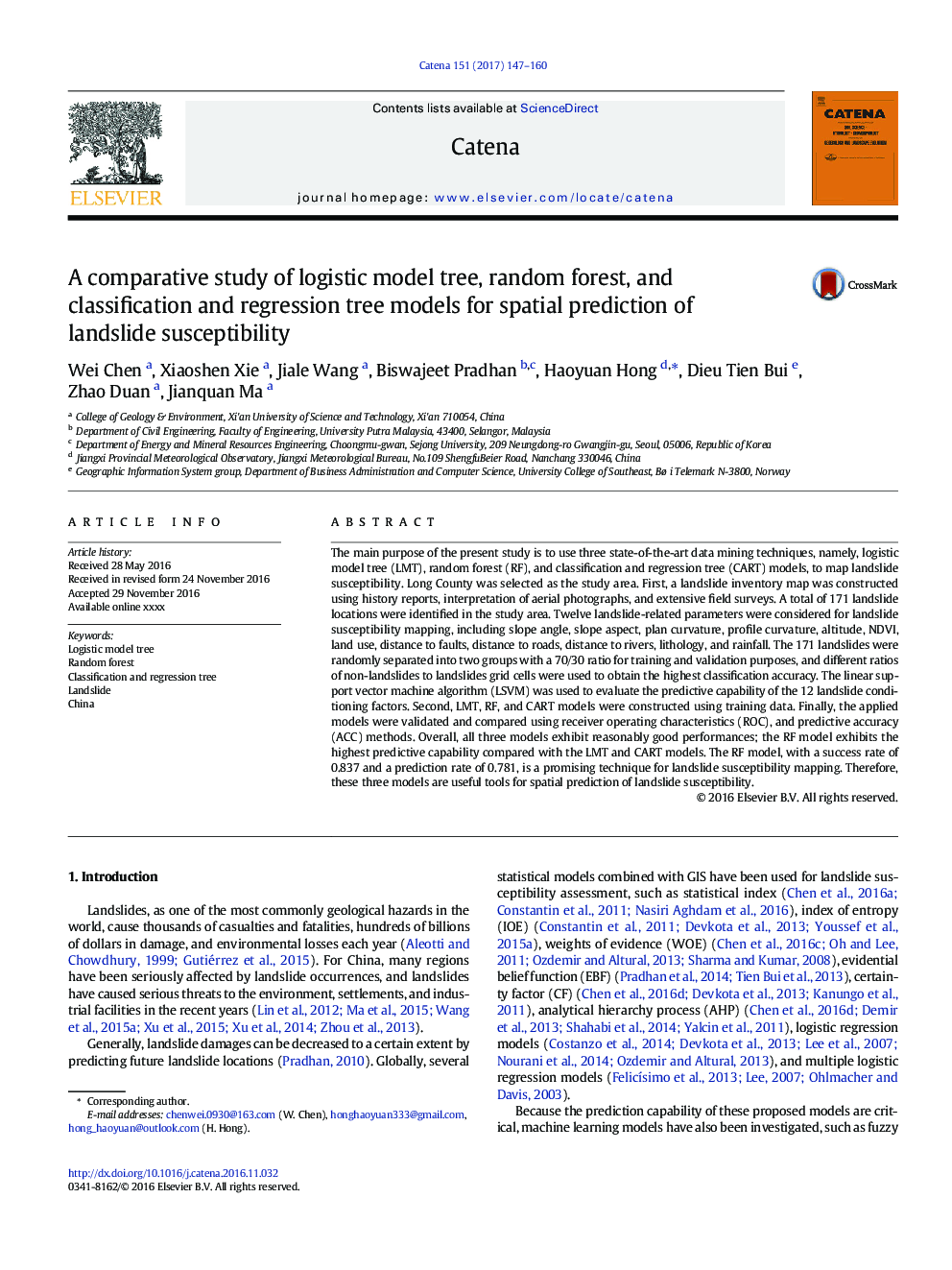| کد مقاله | کد نشریه | سال انتشار | مقاله انگلیسی | نسخه تمام متن |
|---|---|---|---|---|
| 5770181 | 1629203 | 2017 | 14 صفحه PDF | دانلود رایگان |
عنوان انگلیسی مقاله ISI
A comparative study of logistic model tree, random forest, and classification and regression tree models for spatial prediction of landslide susceptibility
ترجمه فارسی عنوان
یک مطالعه تطبیقی درخت مدل لجستیک، جنگل تصادفی و مدل طبقه بندی و مدل رگرسیون برای پیش بینی فضایی حساسیت به لغزش
دانلود مقاله + سفارش ترجمه
دانلود مقاله ISI انگلیسی
رایگان برای ایرانیان
کلمات کلیدی
درخت مدل لجستیک، جنگل تصادفی طبقه بندی و درخت رگرسیون، رانش زمین، چین،
موضوعات مرتبط
مهندسی و علوم پایه
علوم زمین و سیارات
فرآیندهای سطح زمین
چکیده انگلیسی
The main purpose of the present study is to use three state-of-the-art data mining techniques, namely, logistic model tree (LMT), random forest (RF), and classification and regression tree (CART) models, to map landslide susceptibility. Long County was selected as the study area. First, a landslide inventory map was constructed using history reports, interpretation of aerial photographs, and extensive field surveys. A total of 171 landslide locations were identified in the study area. Twelve landslide-related parameters were considered for landslide susceptibility mapping, including slope angle, slope aspect, plan curvature, profile curvature, altitude, NDVI, land use, distance to faults, distance to roads, distance to rivers, lithology, and rainfall. The 171 landslides were randomly separated into two groups with a 70/30 ratio for training and validation purposes, and different ratios of non-landslides to landslides grid cells were used to obtain the highest classification accuracy. The linear support vector machine algorithm (LSVM) was used to evaluate the predictive capability of the 12 landslide conditioning factors. Second, LMT, RF, and CART models were constructed using training data. Finally, the applied models were validated and compared using receiver operating characteristics (ROC), and predictive accuracy (ACC) methods. Overall, all three models exhibit reasonably good performances; the RF model exhibits the highest predictive capability compared with the LMT and CART models. The RF model, with a success rate of 0.837 and a prediction rate of 0.781, is a promising technique for landslide susceptibility mapping. Therefore, these three models are useful tools for spatial prediction of landslide susceptibility.
ناشر
Database: Elsevier - ScienceDirect (ساینس دایرکت)
Journal: CATENA - Volume 151, April 2017, Pages 147-160
Journal: CATENA - Volume 151, April 2017, Pages 147-160
نویسندگان
Wei Chen, Xiaoshen Xie, Jiale Wang, Biswajeet Pradhan, Haoyuan Hong, Dieu Tien Bui, Zhao Duan, Jianquan Ma,
